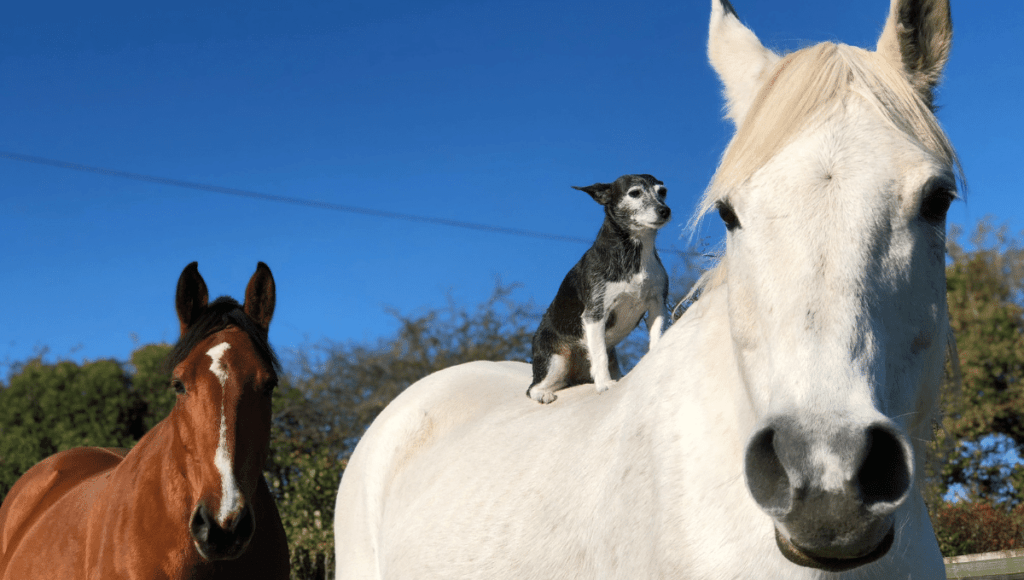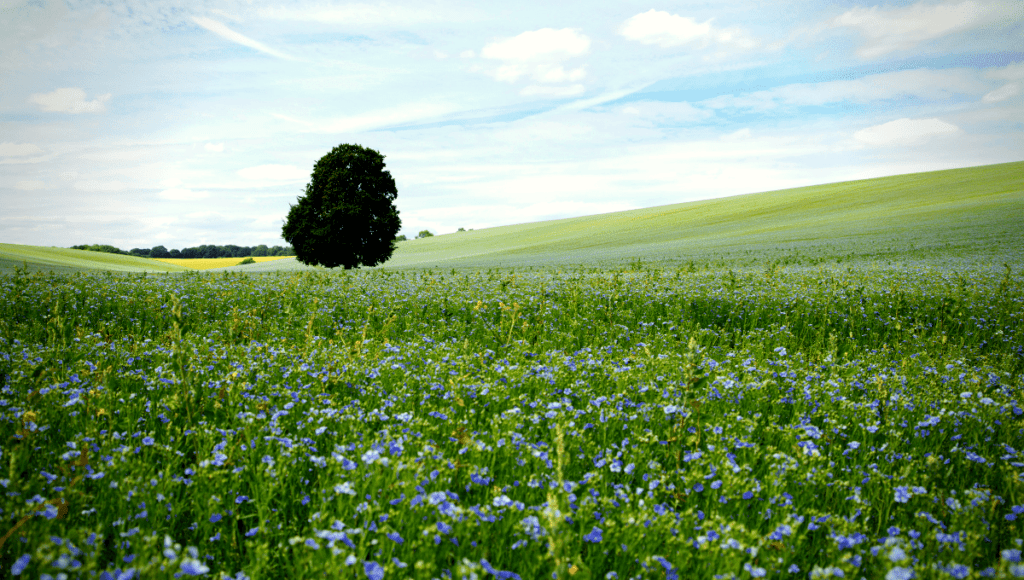Do you know about omega 3 for horses and its importance in equine diets?
Omega 3 for horses is an essential fatty acid that cannot be made by the horse’s body and must be present in the equine daily diet for them to be truly healthy.
There are numerous sources of omega 3 but which one is best for your horse? Flaxseed (otherwise known as linseed), fish oil, chia seeds, krill and algae are all sources of omega 3. However which is the best omega 3 for horses source for you and when and how should you supplement omega 3?
What are Omega Fatty Acids?
Your first question is probably what are omega fatty acids, why are they important and what exactly is a good balance?
Omegas are the name for polyunsaturated fatty acids. Omega 3 for horses is also referred to as alpha-linolenic acid, whilst omega 6 is known as linoleic acid. The two omega fatty acids of most concern are omega 3 and omega 6 because they are essential meaning they cannot be produced by the body and must be obtained from what the horse is eating.
The plant omega 6, alpha-linolenic (AL), is metabolised to arachidonic acid (AA), and is generally considered to be pro-inflammatory. Omega 3, alpha-linolenic (ALA) is metabolised to eicosapentaenoic acid (EPA) and docosahexaenoic acid (DHA) and is generally considered to be anti-inflammatory.

Why are Omega Fatty Acids Important?
Omega fatty acids are important because they have a range of health benefits for horses including:
- Strong hooves
- Shiny, healthy coat
- Supporting health skin to develop resilience against irritations and allergies
- Maintaining joint health
- Contributing to the maintenance and building of bone strength and density
- Enhancing and building immunity resilience
- Enhancing and increasing tissue elasticity
In addition, omega fatty acids play an important role in the regulation of inflammatory responses in the body. Omega 3s have an anti-inflammatory effect whilst omega 6s have a pro-inflammatory effect. At times of infection, injury or illness, inflammation plays an important role in the immune response and is useful to the horse during recovery. Omega 6s are involved in the body’s role of producing inflammation mediators so that when illness or infection is present, the body can respond appropriately. Omega 3s help to ensure that inflammation responses do not occur when the horse is in good health and there is no need for such a response.
Research has shown that omega 3 fats are very important for immune system resilience and response. They are also known to be important for anti-inflammatory balance, assisting in joint and respiratory function, brain and eye health and influencing behaviour in young horses. There is also evidence that fertility in the mare and stallion is dependent upon good levels of these omega 3 fats.
How much Omega 3 should a Horse eat?
Horse diets are plentiful in omega 3 when they are eating green and growing grass in spring and summer. In this situation omega 3 intakes will be excellent but as soon as the grass stops growing in autumn and winter and the horse switches to conserved forages such as hay or haylage their omega 3 levels plummet.
Fat or oil in hays is roughly 50% of the level in fresh grass but the loss is almost entirely omega-3 as the fatty acids are heat sensitive. The curing process to turn grass into hay destroys the omega-3s. Linseed is mainly recommended as a fatty acid supplementation for horses on predominantly hay/supplementary feed diets as they miss out on the omega-3s.
Increasingly it is recognised that because omega 3 fats can only be obtained from the diet it is really important to pay attention to levels in all situations where horses are not eating green and growing grass in sufficient quantity to provide the minimum levels for horses health.
In a grazing situation when the grass is growing in the spring and early summer a 500 kg horse will consume around 200-264 grams of omega 3 per day in the form of alpha-linolenic acid. This is the form of omega 3 contained within the grass. Levels will drop if there is a drought, very hot or very cold weather.
Green and growing spring and summer grass have good levels of omega 3 and a ratio with 0mega 6 of about 4:1. It is thought then that it is this ratio which we need to strive for but many modern feedstuffs such as soya, rice bran, vegetable oils, sunflower seeds and all cereals, have high levels of omega 6 and low levels of omega 3. In addition, once the grass is cut for hay it loses much of its omega 3 content as this substance is a very fragile compound. This means that horses on hay, hay and cereals, soya, or a vegetable oil-enriched diet have very high omega 6 intakes but minimal omega 3.
AL and ALA are predominant in plant sources like grass, flax and chia. DHA and EPA are not naturally present in the equine diet. They are high in fish oil and krill oil and as horses are plant eaters it is not desirable to feed these forms of omega 3 to horses. Some algae are high in DHA.
What Feed is the Best Source of Omega 3 for Horses?
We feel that the best source of Omega-3 fatty acid for horses which have reduced or no access to green and growing grass is micronised linseed. Chia seed is becoming popular but is expensive. As horses are plant eaters it is preferable to feed them a plant-based source of Omega-3.
Flaxseed has a long history of use in equine diets to provide omega 3 for horses, being recognised for producing gleaming coats and bloom long before anyone was thinking about omega-3s. It is also low in sugar/starch and high in soluble fibre. Chia is another plant source with an omega-3:omega-6 ratio similar to flax but is more expensive.
Linseed or flax (Linum usitatissimum) is the only oilseed that contains the ratio of omega-3 fatty acids (anti-inflammatory) to omega-6 fatty acids (pro-inflammatory) in roughly the same ratio as grass, about 4:1. Linseed oil contains roughly 58% omega-3 and 14% omega-6 fatty acids depending on the analysis. Both omega-3 and 6 fatty acids are essential in the diet, they have to come from food sources whereas the other omega fatty acids such as 9 can be manufactured by the horse.
Horses are herbivores, evolved on a diet of grasses. They do not eat fish, tiny crustaceans or algae. When the goal is to provide omega-3s missing in a diet of hay or hay and grain it only makes sense to provide levels and types normally found on pasture. Linseed provides the perfect solution for replacing the missing omega 3 for horses or in horse diets.
The best oil is the one with the most alpha-linolenic acid (omega-3) vs linoleic acid (omega-6). Note that vegetable oil derived from rapeseed has the next best profile for omega-3 after linseed/flax but the amount is a lot less than the level of omega-6. The horse has no shortage of omega-6 fatty acids, the aim is to supplement as much omega-3 fatty acids.

Getting the Right Balance of Omega Fatty Acids in the Horse Diet
Everything in the horse’s diet and indeed life needs balance. To ensure that a horse is able to maintain normal inflammatory responses, it is important that omega 3 and omega 6 fatty acids in the diet are balanced. Many supplements will add to a load of omega 6 fatty acids which are abundant in the normal forage-based diet. Disruption to the balance of omega 3 to omega 6 fatty acids is likely to a negative inflammatory response and a disruption of normal physiological processes.
There is limited research on the best ratio of omega 3 to omega 6, however, it is believed that an approximate ratio of between 1.5:1 and 3:1 is ideal for horses. This is largely informed by the levels which will be found in the forage that horses evolved to eat, so horses consuming over 6 hours per day of green and growing grass will be provided with a suitable ratio of omega 3 to omega 6 fatty acids.
Those horses whose grazing is limited or completely restricted will need supplementation of omega 3 in the form of linseed. The micronised type provides the best option.
Cereals such as oats, barley and maize are high in omega 6s and have an imbalanced ratio of omega 3 to 6. If a horse is on a high cereal diet then it is essential to provide an additional source of omega 3 unless they also have access to green and growing grass.
For horses being fed a diet high in fat for increased energy, weight gain or improved condition, it is important that the fat source has an appropriate balance of omegas. Many oils commonly fed to horses are too high in omega 6 so it is important to be aware that an imbalance may be created.
How can I Feed Omega 3 for Horses
Micronised linseed, flaxseed oil, chia seed, sea buckthorn oil and fish oil are high in omega 3 fats. As horses are vegetarian it is generally recommended not to feed fish oil but to stick to plant-based sources.
Corn oil, sunflower oil, vegetable oil, soybean oil are high in omega 6s and so should be avoided in equine diets. Before adding an oil or fat source to your horse’s diet, check the omega fatty acid ratio to ensure that your horse won’t be burdened by excessive and unnecessary inflammation.
Omegas can also be provided through certain meals and seeds rather than as oil added to the feed. For this, the most suitable options are chia seeds and linseed meals. Rice bran is commonly fed to horses but has a high level of omega 6s, so should be avoided unless feeding alongside an omega 3 for horses source to counteract any potential imbalances.
Forageplus recommend feeding micronised linseed at 42 grams per 220 kg of body weight if feeding to add sufficient omega 3 into the diet. For example, a 500 kg horse would need 500 divided by 220 times by 42. This would equal feeding 95.54 grams of linseed. Round this figure up to 100 grams for ease of measuring.
Omega 3 for Horses - Comparison Table for Best Feed Source
| Omega 3 Source | Daily Amount to Feed | Amount to feed 500kg horse (rounded up) | Notes of Interest |
|---|---|---|---|
| Micronised Linseed | 42 grams per 220kg of bodyweight | 100 grams | Cost effective and stabilised using micronisation |
| Chia Seed | 55 grams per 220 kg of bodyweight | 125 grams | Expensive and whole seeds need to be ground and fed soon after grinding |
| Linseed (not micronised) | 42 grams per 220 kg of bodyweight | 100 grams | Whole seeds need to be ground and fed soon after grinding |
| Linseed Oil (cold pressed) | 20 ml 220 kg of bodyweight | 50 ml | Expensive and oil needs to be stored in refrigerator and used within 30 days. |
How should horses eat linseeds for omega 3?
The best and most successful way to feed linseeds, for omega 3 for horses content in the daily diet, is through feeding micronised linseed meal. The micronising process preserves omega 3 for horses, stabilises the linseed, and preserves other nutrients and goodness which comes from the whole seed.
If feeding the whole seeds it is believed that the seeds need to be freshly ground in a blender or coffee grinder just before feeding. To date, there have been no studies done on how well whole linseeds are digested and the omega-3 fatty acids absorbed if not ground. Some people state that linseeds do not require grinding and feeding the seeds whole. One way to find out how digested the seeds are is to remove any seeds in the manure and place them in a glass of vinegar or even milk. If mucilage or gel forms, then the seeds haven’t been broken down properly.
Another way is to observe whether a crop of linseed plants germinate in the manure, though the limitations to this are that the right environmental conditions also need to be met for the seeds to germinate. Horses with compromised dentition and older horses are unlikely to benefit from whole linseeds.
It is said linseed seed can cause cyanide poisoning because it contains cyanogenic glycosides. Cyanogenic glycosides are common in plants with over 2500 species containing them. Some frequently consumed human foods like lima beans and almonds contain higher levels than flax seeds. Green flax seeds have higher levels and should be avoided but there has never been a report of cyanide toxicity from flax in any species.
Grinding the linseed and exposure to water is reported to raise cyanide levels. Care should be taken in this situation although Dr Kellon VMD said she has never ever seen a report of cyanide poisoning from linseed in a horse.
Boiling linseeds will destroy the omega fatty acids, if the purpose is to supplement omega-3 in the horse diet then boiling is not recommended.
How horses are feed linseeds, for omega 3, should be a personal decision by the horse owner about what they feel comfortable feeding. If not comfortable with grinding the seeds, if micronised linseed is unavailable, then simply use linseed oil. The oil does not contain cyanogenic glycosides.
The oil should be cold pressed, stored out of light and once opened kept in a refrigerator. Cold-pressed means the oil has been squeezed out of the seeds without heating the seeds so the omega 3 fats will still be intact. Heat will destroy the fatty acids.
Omega 3 is very fragile and will oxidise if kept in sunlight and room temperature. The higher the ambient temperature the more faster the omega 3 will degrade. Cold pressed un-stabilised oil, for feeding horses Omega 3, should be used within 30 days of opening even if kept refrigerated.
A guide for feeding cold pressed linseed oil for omega 3 content is to feed 20 mls per 220 kg of bodyweight.
There are some stabilised omega 3 oils on the market, but take care to note how they are stabilised. Some are stabilised using natural compounds and some using synthetic compounds. Some linseed oils contain additive stabilizers based on bean and soybeans. This effectively inhibits the oxidation and oxidative destruction of flaxseed oil lipids. High antioxidant activity in flaxseed oil of vegetable stabilizers enables significant increase of the shelf life of the oil. Other stabilisers can be natural phenolic compounds with rosemary extract being recorded as a successful antioxidant. The naturally stabilised linseed oils can however be very expensive.
Omega 3 for horses is so important in the diet, especially in winter, that it is extremely important to feed the best. It is better to pay more for quality, than pay less for something which has sat on a feed store shelf and either has very low amounts of omega 3 or has oxidised and gone rancid. Most humans can’t smell the difference and rancid fats can be dangerous.
Should I Feed Linseed or Chia seeds for Omega 3?
Chia seeds can be fed instead of linseeds. Chia is a good source of omega-3 fatty acids though this form contains less per kg than linseeds and the omega-3 to omega-6 ratio is less too. Compared to linseed, Chia has a similar to a somewhat lower ratio of omega-3:6, depending on where you are reading, and is also a reasonable source of omega-3 but there are claims by some it is superior. It’s not!
It has been claimed Chia is more convenient because it doesn’t require grinding but recent research has found this is not true – it also needs to be ground. Chia is much more expensive than feeding linseed for horse omega 3.
When feeding Chia seeds the conversion factor for omega-3 fatty acids is roughly 1.25 depending on the cultivar. Multiply the amount of linseed needed for omega 3 supplementation by 1.25 to get the equivalent amount of chia seeds. For example, 100 grams of linseed is approximately equivalent in omega-3 fatty acids to 125 grams of chia seeds.
A balanced diet providing the right amounts and ratios of all the nutrients will ensure your horse is healthy and active. Using forage, grass and hay, as the starting point for the assessment of what is needed is the best and most effective place to start and is a basic which should not be overlooked.
Check out some of our other interesting articles on horse feeding here.
-
 Micronised Linseed for Horses£8.95 — or subscribe and save 5%
Micronised Linseed for Horses£8.95 — or subscribe and save 5%



